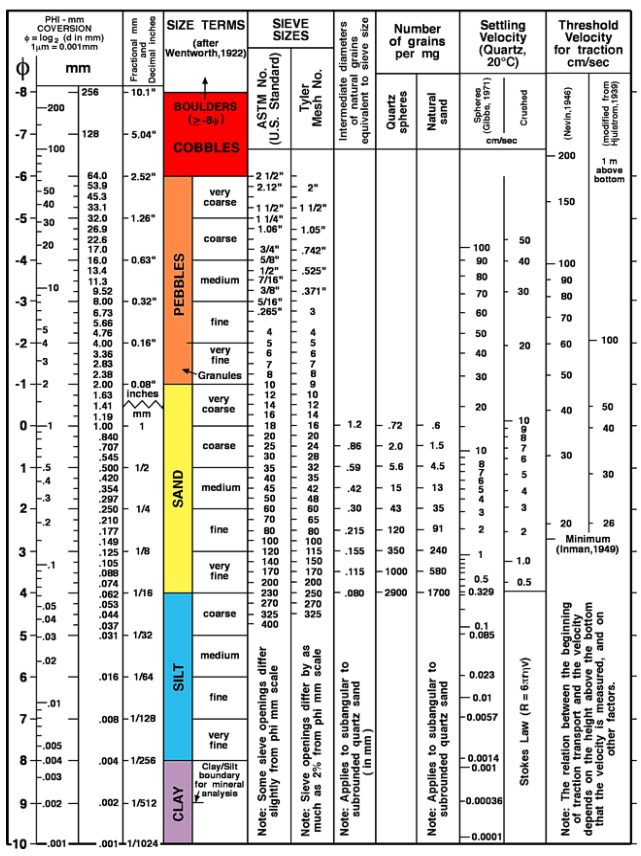
Bienvenido a la República Dominicana.
Bienvenido a Playa Bávaro Punta Cana !
Ya hemos pasado varias vacaciones en esta hermosa playa.
Nos entusiasmó, entre otras muchas cosas, la hermosa arena blanca.
Esto me dio la idea de crear una CE sobre este tema.
Así que espero poder ofrecerles una CE instructiva que les guste.
A continuación le ofrecemos información general sobre esta zona costera.
Punta Cana es una localidad turística situada en el este de la República Dominicana, en el distrito municipal de Verón - Punta Cana, en la provincia de La Altagracia. El nombre deriva del promontorio situado en el extremo oriental de la isla (Punta) y de las palmeras Cana (Coccothrinax argentea) que crecen allí.
La costa sureste de la República Dominicana es conocida por sus hermosas playas y su mar azul turquesa. Un arrecife de coral alargado actúa como barrera natural contra el oleaje en esta costa. En particular, la Playa Bávaro, de casi 50 km de longitud, que incluye también la Playa de Arena Gorda, atrae a turistas de todo el mundo por su pintoresco ambiente.
FUENTE: wikipedia
Tamaño del grano
El tamaño del grano, el diámetro equivalente de las partículas (granos) de los sedimentos clásticos (productos de la meteorización y de la reordenación mecánica) y de las partículas del suelo. La clasificación granulométrica según la norma DIN 4022 distingue entre arcilla, limo, arena, grava y piedras. La clasificación granulométrica según Udden & Wenthworth, modificada según Doeglas, incluye arcilla, limo, arena, gránulos, guijarros, cantos rodados y cantos rodados. Las dos escalas mencionadas utilizan milímetros como unidad. Una escala aritmética es la división del tamaño del grano según Phi como una transformación logarítmica de la escala Udden-Wenthworth.
donde d = tamaño de grano en milímetros. El tamaño de los granos puede determinarse mediante diversos métodos, como el análisis por tamizado, el análisis por sedimentación o los métodos ópticos. Siempre hay que tener en cuenta que, al determinar a partir de secciones finas, sólo se registra una sección bidimensional, lo que puede causar problemas considerables con formas de grano más complicadas. El método estándar para determinar el tamaño de los granos en secciones delgadas es el método de la sección cordal. La siguiente clasificación según el tamaño medio del grano ha sido aceptada internacionalmente para el análisis del terreno: de grano fino: 1 mm, de grano medio: 1-5 mm, de grano grueso >5 mm. En Alemania también se utiliza habitualmente la clasificación granulométrica de las rocas cristalinas según Teuscher.
Pero ahora a la arena y su clasificación
SU TAREA PARA EL CACHÉ:
1.) Cuántos tipos de sedimentos puedes encontrar?
Por favor, clasifique los sedimentos utilizando la escala de Wentworth.

2.) Examina cada uno de los sedimentos con mucho cuidado y comprueba de qué mineral se trata.
A) Monominerales (formados por un solo tipo de material).
B) Poliminerales (formados por varios tipos de materiales).
3.) Deja que la arena seca se deslice por tus manos, ahora golpea tus manos. Qué sensación de piel queda?
A) La sensación de que las manos se han puesto ásperas con papel de lija.
B) La sensación de azúcar glas entre los dedos.
C) La sensación de humedad a pesar de que las manos estaban secas antes.
Describa con sus propias palabras el motivo.
4.) Haz una foto del tronco con un grano de arena en la mano para el tronco, y el hotel de fondo.
Opcionalmente, también un corazón en la arena con fecha incluida.
Ejemplo:

Por supuesto, me alegro de todas las demás fotos presentadas para despertar la fiebre de los viajes.
Te deseo que te diviertas mucho con esta CE y que pases unos días maravillosos en estas grandes islas.
Envíame tus tres respuestas e incluye las fotos del registro.
Entonces puedes registrarte inmediatamente, si las respuestas no son correctas me pondré en contacto contigo.
Si no recibo ninguna respuesta o faltan las fotos del registro, lamentablemente tendré que borrar tus registros.
.........................

Willkommen in der dominikanischen Republik.
Willkommen an der Playa Bavaro Punta Cana !
Wir verbrachten schon mehrere Urlaube an diesem schönen Strand.
Uns begeisterte, neben vielen anderen tollen Dingen, natürlich auch der schöne weisse Sand.
Das hat mich zu der Idee gebracht hier einen EC zu diesem Thema auszulegen.
So hoffe ich hier einen lehrreichen EC anzubieten zu können der Euch Spaß macht.
Hier nun einige allgemeine Informationen zu diesem Küstenbereich.
Punta Cana ist ein vom Tourismus bestimmter Ort im Osten der Dominikanischen Republik im Bezirk Verón – Punta Cana (Distrito Municipal Verón Punta Cana) in der Provinz La Altagracia. Der Name leitet sich von der Landspitze am Ostende der Insel ab (span. Punta) und von den Cana-Palmen (Coccothrinax argentea), die dort wachsen.
Die Südostküste der Dominikanischen Republik ist bekannt für ihre schönen Strände und türkisblaues Meer. Als natürlicher Brandungsschutz fungiert an dieser Küste ein langgestrecktes Korallenriff. Insbesondere die fast 50 km lange Playa Bavaro, zu der auch die Playa de Arena Gorda gehört, ist aufgrund der malerischen Atmosphäre Anziehungspunkt für Touristen aus aller Welt.
QUELLE: wikipedia
Korngröße
Korngröße, bezeichnetden Äquivalentdurchmesser von Teilchen (Körnern) klastischer Sedimente (Produkte von Verwitterung und mechanischer Umlagerung) und Bodenpartikeln.Es werden verschiedene Korngrößeneinteilungen verwendet. Die Korngrößeneinteilung nach DIN 4022 unterscheidet Ton, Schluff (Silt), Sand, Kies und Steine. Die Korngrößeneinteilungnach Udden & Wenthworth, modifiziert nach Doeglas, beinhaltet clay (Ton), silt (Silt), sand (Sand), granules, pebbles, cobbles (Kies) und boulders (Steine). Die beiden genannten Skalen benutzen als Einheit Millimeter. Eine arithmetische Skala ist die Korngrößeneinteilung nach Phi als logarithmische Transformation der Udden-Wenthworth-Skala.
wobei d = Korngröße in Millimetern. Korngrößen können mit unterschiedlichen Methoden bestimmt werden, wie z.B. durch Siebanalyse, Sedimentationsanalysen oder optische Verfahren. Zu bedenken ist stets, daß bei der Bestimmung aus Dünnschliffen nur ein zweidimensionaler Anschnitt erfaßt wird, was bei komplizierteren Kornformen erhebliche Probleme erzeugen kann. Standardverfahren zur Bestimmung von Korngrößen im Dünnschliff ist das Sehnenschnittverfahren. Folgende Einteilung nach der mittleren Korngröße hat sich für die Geländeansprache international weitgehend durchgesetzt: feinkörnig: 1 mm, mittelkörnig: 1-5 mm, grobkörnig >5 mm. In Deutschland auch gebräuchlich ist die Korngrößeneinteilung für Kristallingesteine nach Teuscher.
Doch nun zum Sand und seiner Klassifizierung
EURE AUFGABE ZUM CACHE:
1.) Wie viele Arten von Sedimenten findest Du?
Sortiere bitte die Sedimente anhand der Wentworth-Skala.

2.) Untersuche jedes der Sedimente sehr genau und prüfe um welches Mineral es sich handelt.
A) Monominerale (bestehend aus nur einer Materialart)
B) Polyminerale (bestehend aus mehreren Materialarten)
3.) Lass trocken Sand durch die Hande rieseln, nun Hände abklopfen. Welches Hautgefühl bleibt ?
A) Das Gefühl als wären die Hande wie von Schleifpapier aufgeraut.
B) Das Gefühl von Puderzucker zwischen den Fingern
C) Das Gefühl von Feuchtigkeit obwohl die Hände vorher trocken waren.
Beschreibe in eigenen Worten warum dieses so ist.
4.) Erstelle für den Log ein Logfoto mit einem Sandkorn in Deiner Hand & dem Hotel im Hintergund.
Optional auch ein Herz im Sand inkl. Datum.
Beispiel:

Natürlich freuen ich mich über jedes weitere eingestellte Foto um das Reisefieber zu entfachen.
Ich wünsche euch viel Spaß bei diesem EC und einen schöne Zeit auf diesen tollen Inseln.
Schickt mir Eure drei Antworten und stellt das Logfotos mit ein.
Dann dürft ihr sofort loggen, sollten die Antworten nicht stimmen werde ich mich bei Euch melden.
Sollte ich keine Antworten erhalten oder das Logfotos fehlen, werde ich leider Eure logs löschen müssen.
.........................

Welcome to the Dominican Republic.
Welcome to Playa Bavaro Punta Cana !
We already spent several vacations on this beautiful beach
We were thrilled, in addition to the many other great things, of course, the white sand.
This has brought me to the idea here an EC to this topic.
So I hope to be able to offer here an instructive EC that makes you fun.
Here now some general information about tthis part of the coast.
Punta Cana is a tourist town in the east of the Dominican Republic, in the district of Verón - Punta Cana (Distrito Municipal Verón Punta Cana), in the province of La Altagracia. The name derives from the headland at the east end of the island (Spanish: Punta) and from the Cana palms (Coccothrinax argentea) that grow there.
The southeast coast of the Dominican Republic is known for its beautiful beaches and turquoise sea. An elongated coral reef acts as a natural surf barrier on this coast. In particular, the almost 50 km long Playa Bavaro, which also includes Playa de Arena Gorda, is an attraction for tourists from all over the world due to its picturesque atmosphere.
Source: wikipedia
Grain size
Grain size is the equivalent diameter of particles (grains) of clastic sediments (products of weathering and mechanical rearrangement) and soil particles. The particle size classification according to DIN 4022 distinguishes between clay, silt, sand, gravel and stones. The grain size classification according to Udden & Wenthworth, modified after Doeglas, includes clay, silt, sand, granules, pebbles, cobbles and boulders. Both of the above scales use millimeters as the unit. An arithmetic scale is the grain size division according to Phi as a logarithmic transformation of the Udden-Wenthworth scale.
where d = grain size in millimeters. Grain sizes can be determined by different methods, such as sieve analysis, sedimentation analysis or optical methods. It should always be borne in mind that when determining from thin sections, only a two-dimensional section is recorded, which can cause considerable problems with more complicated grain shapes. The standard method for determining grain sizes in thin sections is the chordal section method. The following classification according to mean grain size has become widely accepted internationally for terrain analysis: fine-grained: 1 mm, medium-grained: 1-5 mm, coarse-grained >5 mm. In Germany, the grain size classification for crystalline rocks according to Teuscher is also commonly used.
But now to the sand, and its classification
YOUR TASK FOR THE CACHE:
1.) How many types of sediments do you find?
Please sort the sediments according to the Wentworth scale.

2.) Examine each of the sediments very carefully and check which mineral it is.
A.) Monomineral (consisting of only one type of material)
B.) Polyminerals (consisting of several types of material)
3.) Let dry sand trickle through your hands, then pat hands. What feeling remains on the skin?
A) The feeling as if the hands were roughened by sandpaper.
B) The feeling of powdered sugar between the fingers.
C) The feeling of moisture, although the hands were dry before.
Describe in your own words why it is like that.
4.) Create a log photo for the log with a grain of sand in your hand & the hotel in the background.
Optionally also a heart in the sand incl. the date.
Sample:

Of course, I am happy about every other posted photo to spark the travel fever.
I wish you a lot of fun with this EC and a nice time on this great islands.
Send me your four answers and include the log photos
Then you may log immediately, if the answers are not correct I will contact you.
If I do not receive any answers or the log photo is missing, I will have to delete your logs.
Wer möchte kann das Banner in sein Profil einbauen.
Whoever wants to can add the banners to their own profile.

Füge dazu einfach folgenden Code in Dein Profil ein: / Just add the following code to your profile:
<a href="http://coord.info/GC9J16Q" target="_blank"><img src="https://s3.amazonaws.com/gs-geo-images/074c153e-7f55-4fe4-bdf8-d64c71a8f895_l.jpg?rnd=0.7346961" border="0" /></a>
Für die ersten drei Finder gibt es eine kleine Tabelle! / For the first three finders there is a small table!
1.) Hrejsi / Méda Béda
2.) Pinnstef57 / Miata08
3.) ZuuDee
